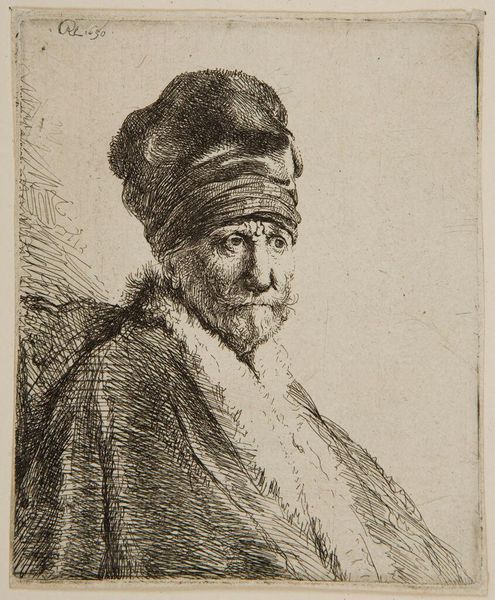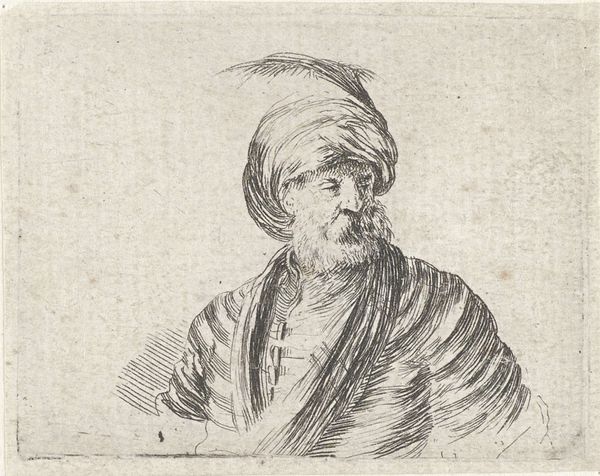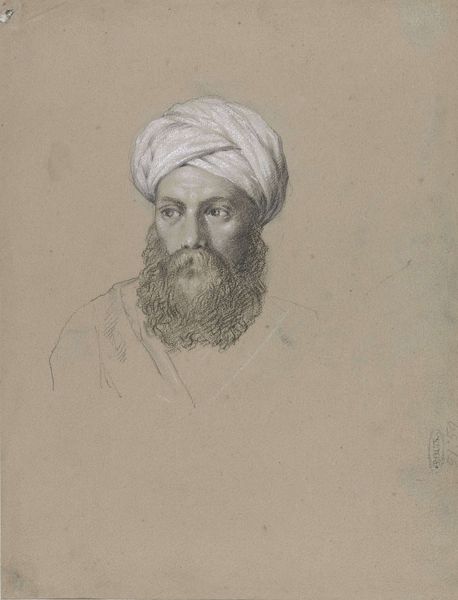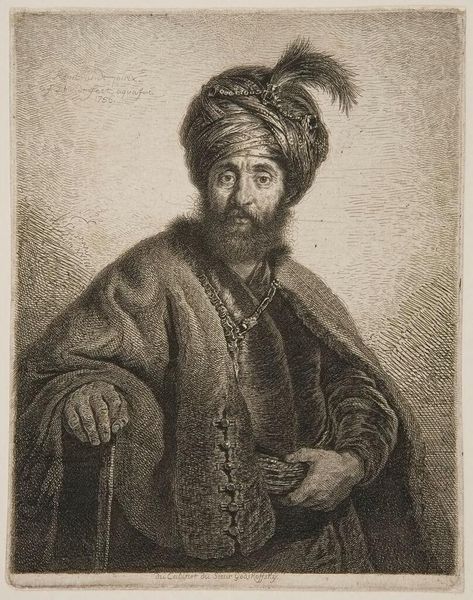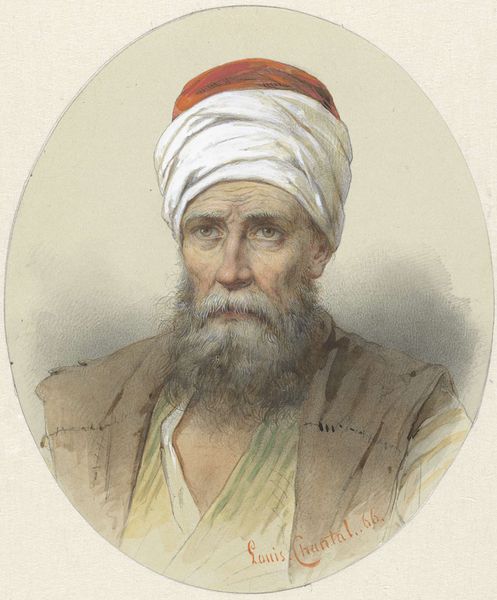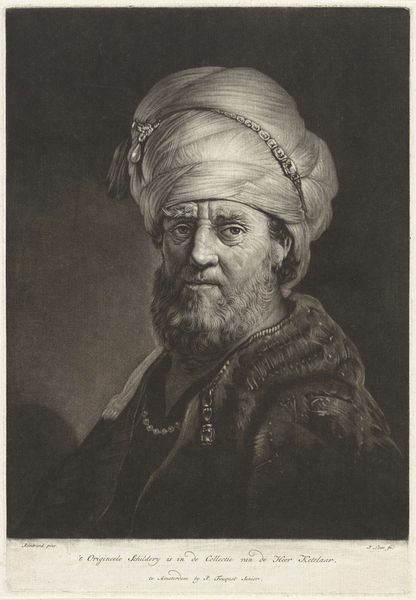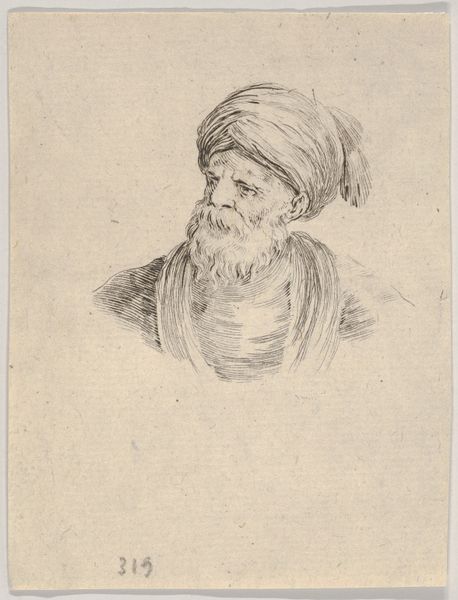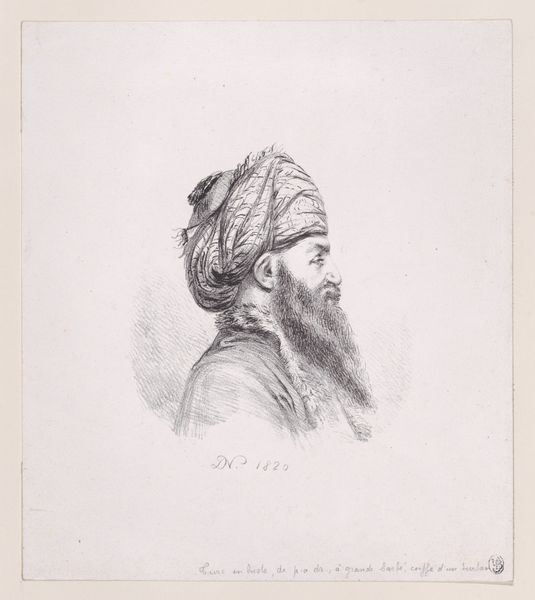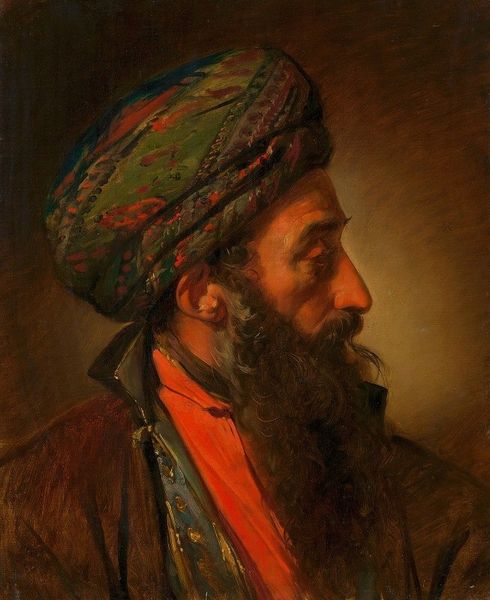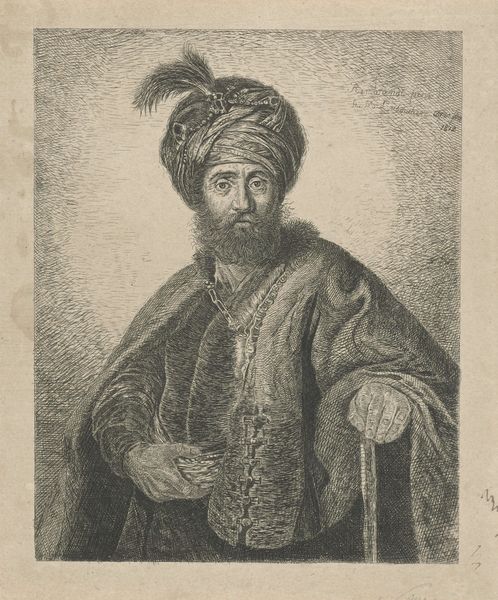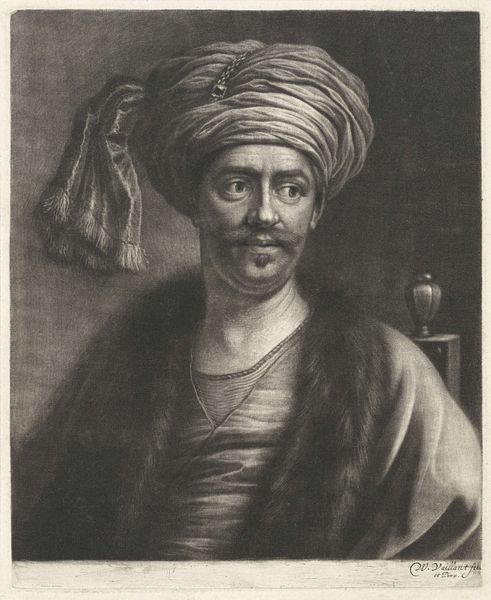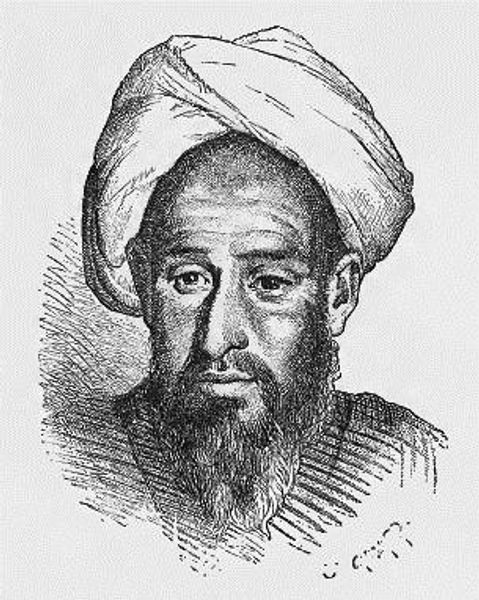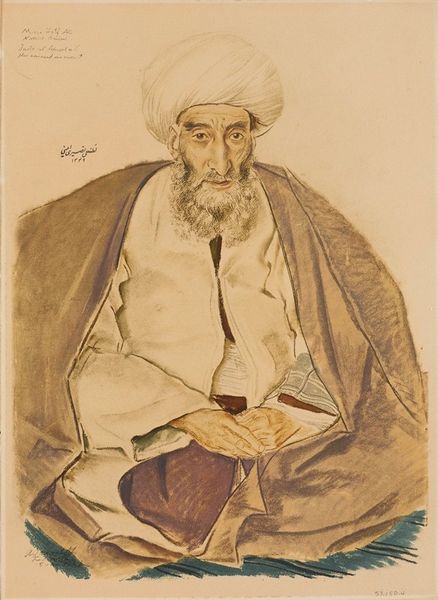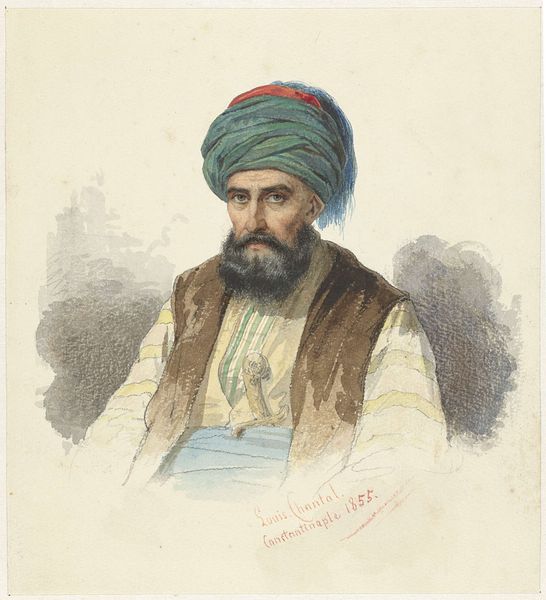
drawing, pencil
#
portrait
#
drawing
#
asian-art
#
charcoal drawing
#
pencil drawing
#
pencil
#
realism
Copyright: Public domain
Editor: We're looking at "Uzbek, the foreman (elder) village Hodzhagent," a pencil drawing by Vasily Vereshchagin, created in 1868. It's a portrait, very simply rendered, but with an intense gaze. What strikes me most is the subject's turban; it speaks of both authority and tradition. How do you interpret this work? Curator: That turban is indeed key. Think of it as a visual marker. Turbans across various cultures signify diverse things: spiritual wisdom, community leadership, even resistance. In this portrait, combined with the man's direct stare, it projects an undeniable sense of rooted authority. Does that resonate with you? Editor: Absolutely. The directness of his gaze amplifies the sense of authority. The drawing style is realistic, even ethnographic. Were these studies for something else? Curator: Very possibly. Vereshchagin was known for his documentary approach. He doesn't seem to idealize his sitter, choosing instead to capture the lines etched by time and experience. Think about the lines around his eyes – they whisper of stories, of a life lived. The picture whispers that symbols matter: How they are crafted, viewed, interpreted. The turban isn't just cloth; it’s a cultural shorthand. What does this portrait make you think about, culturally? Editor: I find it remarkable that such a simple drawing can communicate so much about a person's role and status. It makes you think about cultural markers and what they mean across different societies. Curator: And how those markers endure. It prompts me to think about what signifiers of authority we might be overlooking in our own contemporary society. This piece really encapsulates the idea of how visual symbols build continuity between generations, which is quite beautiful to see here.
Comments
No comments
Be the first to comment and join the conversation on the ultimate creative platform.
